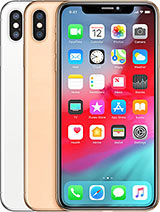Samsung announces UFS 4.0 storage with faster speeds and better power-efficiency
While a smartphone’s storage capacity is one of the most important selling points for a consumer, the type of storage is often overlooked. Most Android smartphones (and many electronics) use the UFS (Universal Flash Storage) and most flagships nowadays use either 3.0 or 3.1 UFS storage.
On Tuesday, Samsung introduced UFS 4.0 which uses Samsung’s Gen 7 V-NAND memory and proprietary controller with sequential read speeds of up to 4,200 MB/s and sequential write speeds of up to 2,800 MB/s. The new storage tech will also deliver a 46% power-efficiency improvement in sequential read speeds compared to the previous generation.
BREAKING: Samsung has developed the industry's highest performing Universal Flash Storage (UFS) 4.0 storage solution, which has received JEDEC® board of director approval. What is UFS 4.0 and what does it mean for the future of storage? Read on to learn more. pic.twitter.com/4Wxdu0J2PD
— Samsung Semiconductor (@SamsungDSGlobal) May 3, 2022
Per lane, UFS 4.0 supports up to 23.2Gbps per lane, doubled from UFS 3.1. Samsung boasts this amount of “bandwidth is perfect for 5G smartphones requiring huge amounts of data processing,” and it expects to see the technology be adopted in VR, AR, and automotive applications.
The new storage tech can be configured to support up to 1TB of storage so we hope that means we’ll begin seeing more smartphones outfitted with 512GB and 1TB capacities.
Samsung expects mass production of UFS 4.0 storage to start in Q3 so we can expect to see smartphones don the new technology towards the end of the year, or on the Galaxy S23 series that should launch in Q1 of 2023. Read the full Twitter thread to read Samsung’s full announcement about UFS 4.0.
Related
Reader comments
- veryangrynerd
- 22 Jun 2023
- XKB
yikes iPhone 8 has 1200/600 so they basically never updated that. write speed improvements could solely be from a better controller or better driver. oof iPhone 6s had 1840 read speeds which they nerfed in the iPhone 7 and later LOL
- Samsung for life
- 13 Apr 2023
- uu1
Actually for phone storage , ufs 4.0 is the fastest. Faster than nvme used in iPhone. Nvme in iPhone is nowhere near ufs 4.0 in speed. Iphone should move to ufs 4.0 for iphone 15.
- A16 Big dog
- 06 Feb 2023
- XBx
Good heavens no!! 😂 Nvme storage used in iPhones are not the same with the PCI E NVME storage seen on Mac books 💻 and desktop Pc please 🤣








 Sony
Sony Samsung
Samsung Apple
Apple Apple
Apple Xiaomi
Xiaomi


